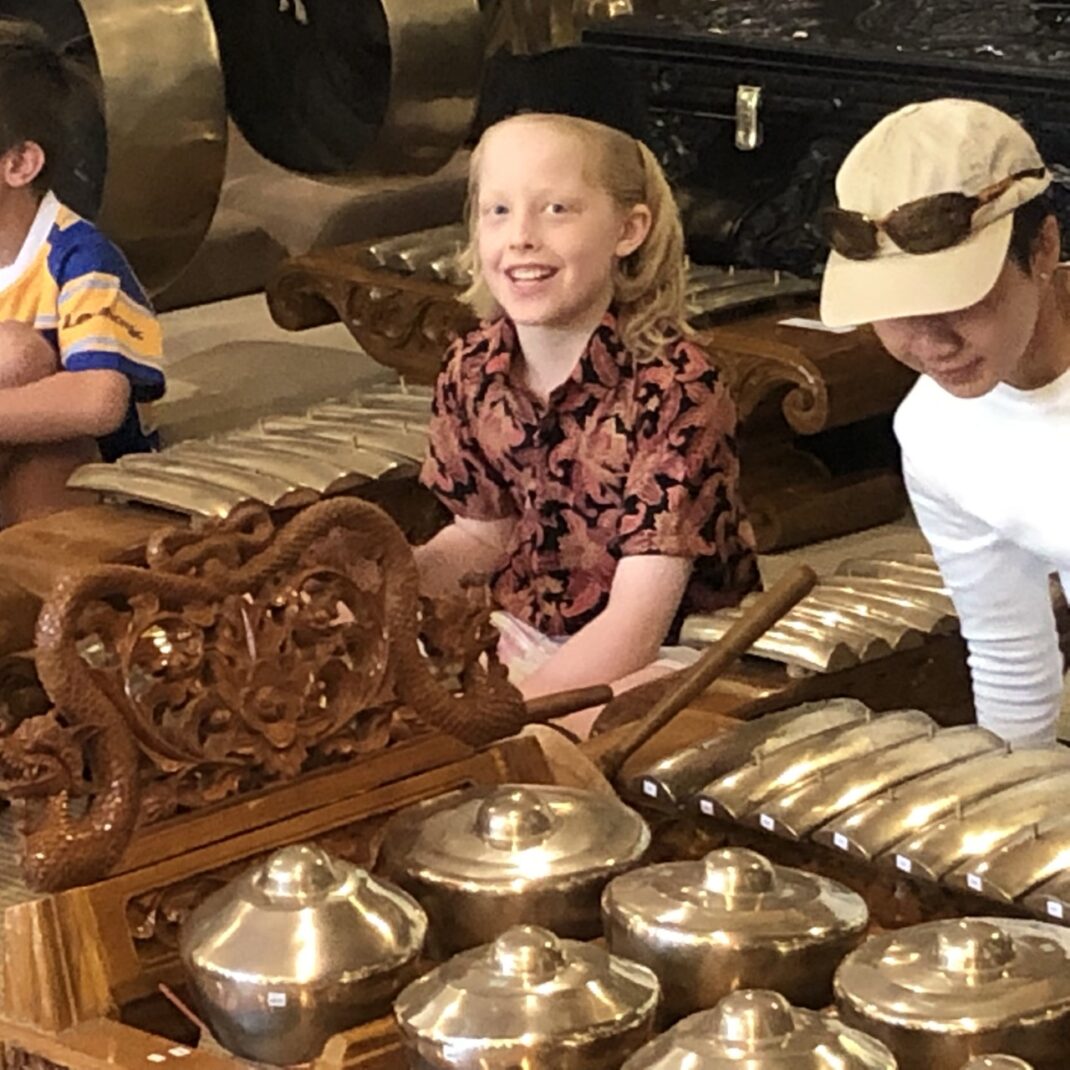3 May 2025. National Film and Sound Archive, Canberra International Music Festival
My review of A Book of Hours was published by CityNews online on 4 May. Below is a slightly altered version of the review. For those of my readers who may not know the ‘bonang’, which is mentioned in the text, I have added some images at the end of this post. The review as in CityNews is at this link.
**********************************
The production A Book of Hours gives our ears a classical-contemporary score by Kate Neal, created with the concept of the medieval Book of Hours and its divisions of time as its focus. But the score is more a reimagining of those ideas and asks us look at how time is spent in the present day. The performance in Canberra was part of the Canberra International Music Festival and the score was played by the Rubiks Collective.
The Collective consists of four musicians performing on flute (of which there was more than one) played by Tamara Kohler, on keyboard with Jacob Abela, on cello from Gemma Kneale and on percussion by Kaylie Melville. The score had, to my ears, a strongly percussive overall sound. It made for interesting listening.
Our eyes were given much to take in. The music was played in front of video footage in various formats projected on to a screen at the back of the performing space. Those formats included various kinds of animation from visual artist Sal Cooper, as well as examples of human movement from choreographer Gerard van Dyck, who also performed the movement on film. It was often a fascinating watch especially those moments when van Dyck appeared to be continually falling from the sky.
In addition, much movement was generated onstage by the musicians. They interrupted moments of playing with various personal actions such as cleaning their teeth, combing their hair, adding underarm deodorant, and with various movements of the hands unrelated to the playing of an instrument.
But listening to the score and watching the playing of it, I was surprised to see the percussion section included an instrument that I thought was an Indonesian bonang, the well-known instrument that includes a collection of gongs on a wooden platform. The trouble is that in this case the gongs were of an assortment of different sizes and scattered randomly across the platform. Who knows what an Indonesian would think of it? I disliked the mess that was there given that the instrument is actually a beautifully arranged series of gongs in horizontal lines. Although I guess the mess fitted with the idea of the reimagining around which the overall work was made.
So, what of the hours themselves? They were represented on screen by a huge variety of images of clock faces, some even created from a circle of decorative biscuits. In addition to the biscuits there were speaking clocks, small and large images of all kinds of clocks, as well as digital expressions of time passing. Although it seemed at times that the clocks would never go away as there were so many of them coming and going, in many respects the variety of clocks shown on the screen was the most interesting aspect of the whole show.
A Book of Hours was, to my mind, a multi-media novelty item. Sometimes it was funny, sometimes interesting to hear and watch. But it was also sometimes over the top and do we listen or watch? It was hard to decide. I’d rather listen OR watch rather than being presented with the impossible decision the production asked us to make.
Michelle Potter, 5 May 2025
Featured image: A scene from A Book of Hours in Canberra showing an episode of tooth cleaning on the screen behind the musicians. Photo: © Peter Hislop



(left) A bonang from the Musical Instruments Museum in Phoenix, Arizona. Photo: ksblack99; (right) A section of a bonang (in the foreground)—Embassy of the Republic of Indonesia, Canberra, open day 2019. Photo: © Neville Potter
